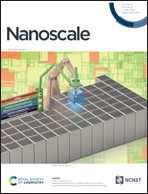Unprecedented atomic surface of silicon induced by environmentally friendly chemical mechanical polishing
Abstract
Silicon (Si) dominates the integrated circuit (IC), semiconductor, and microelectronic industries. However, it is a challenge to achieve a sub-angstrom surface of Si. Chemical mechanical polishing (CMP) is widely used in the manufacturing of Si, while toxic and polluted slurries are usually employed in CMP, resulting in pollution to the environment. In this study, a novel environmentally friendly CMP was developed, in which a slurry is composed of ceria, hydrogen peroxide, sodium pyrophosphate, sodium carboxymethyl cellulose, sodium carbonate, and deionized water. After CMP, the surface roughness Sa was 0.067 nm with a measurement area of 50 × 50 μm2, and a sub-angstrom surface is achieved. To the best of our knowledge, it is the lowest surface roughness in such a large area. Transmission electron microscopy shows that the thickness of the damaged layer after CMP is 2.8 nm. X-ray photoelectron spectroscopy and infrared Fourier transformation reveal that during CMP, a redox reaction firstly took place between Ce3+ and Ce4+. Si and ceria are hydroxylated, forming Si–OH and Ce–OH, then dehydration and condensation occur, generating Si–O–Ce. These findings propose new insights to fabricate a sub-angstrom surface of Si for use in IC, semiconductor, and microelectronic industries.



 Please wait while we load your content...
Please wait while we load your content...